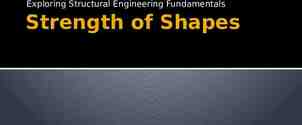ME 221 Statics Summer 2004 Mr. Hinds 3523 EB hinds@msu
30 Slides171.50 KB
ME 221 Statics Summer 2004 Mr. Hinds 3523 EB [email protected]
Administrative Details Syllabus will be posted on the web – www.angel.msu.edu (Angel) Lecture attendance – Web will be used for announcements but not all important announcements given in class may be posted on the web – Bring books to class for example problems Sample problems will be an integral part of lecture ME221 Lecture 1 2
Administrative Details cont. Exams – Dates set and given on syllabus – Format closed book, closed notes, calculator – Excused absences: See syllabus – Philosophy Most problems like HW; some problems conceptually same as HW but somewhat different ME221 Lecture 1 3
Administrative Details cont. Homework & quizzes – solutions will be posted – all or partial problems will be graded – lecture quizzes used as “scrimmages” quizzes in the last 10-15 minutes of lecture similar to assigned homework generally announced - some unannounced ME221 Lecture 1 4
Announcements HW#1 Due on Friday, May 21 Chapter 1 - 1.1, 1.3, 1.4, 1.6, 1.7 Chapter 2 – 2.1, 2.2, 2.11, 2.15, 2.21 Quiz #1 on Friday, May 21 ME221 Lecture 1 5
Announcements ME221 TA’s and Help Sessions Chad Stimson – [email protected] Homework grading & help room Tuesdays & Thursdays – 8am to 1pm – 1522EB Jimmy Issa – [email protected] Quiz & exam grading & help room Tuesdays & Thursdays – 1pm to 5pm – 2415EB Will begin on Tuesday, May 18 Hours also posted on Angel ME221 Lecture 1 6
Administrative Details cont. Questions? ME221 Lecture 1 7
Problem Solving Strategy 1 - Modeling of physical problem (free body diagram) 2 - Expressing the governing physical laws in mathematical form 3 - Solving the governing equations 4 - Interpretation of the results ME221 Lecture 1 8
Mechanics Reform Textbook offers a departure from past standards – recognizes the power of computer software in solving problems MatLab, MathCAD, Maple, Mathmatica, VB, etc. calculators may be effectively utilized as well – before using the software, the problem must be properly posed posing the problem will be emphasized in this class ME221 Lecture 1 9
Mechanics Reform cont. Software helps us with: trigonometry units conversion systems of equations iterative processes for design problems Software does not help with: envisioning the physical system applying the proper laws of physics ME221 Lecture 1 10
Mechanics Broadly defined as the study of bodies that are acted upon by forces. Types of bodies – particles (considered rigid bodies) – rigid bodies - relative distance between any two points remains constant throughout motion – deformable bodies – fluids ME221 Lecture 1 11
Mechanics Overview Statics Mech Matl Rigid Static Deformable Static Dynamics Rigid Dynamic Fluid Dyn Deformable Dynamic ME221 Lecture 1 12
And now . Statics ME221 Lecture 1 13
Chapter 1: Measurement Newton’s Laws of Motion Space and Events Vectors and Scalars SI Units (Metric) U.S. Customary Units Unit Conversion Scientific Notation Significant Figures ME221 Lecture 1 14
Basics: Newton’s Laws Every body or particle continues in a state of rest or of uniform motion in a straight line, unless it is compelled to change that state by forces acting upon it (1st Law). (Law of Inertia) The change of motion of a body is proportional to the net force imposed on the body and is in the direction of the net force (2nd Law). F ma If one body exerts a force on a second body, then the second body exerts a force on the first that is equal in magnitude, opposite in direction, and collinear (3rd Law). ME221 Lecture 1 15
Basics Space -- we need to know the position of particles y mi x z Event -- position at a given time ME221 Lecture 1 16
Basics cont. –Two broad quantities scalars have no direction associated with them e.g., temperature, mass, speed, angle – vectors must have direction specified e.g., velocity, force, acceleration Mass -- a scalar that characterizes a body’s resistance to motion Force -- (vector) the action of one body on another through contact or acting at a distance ME221 Lecture 1 17
International System of Units:The SI system Length meters m Time seconds s Mass kilogram kg Force m/s2 Newton N 1 kg See table 1-1 for prefixes Compound units Remember: Speed distance/time so in SI units, speed is measured in m/s ME221 Lecture 1 18
U.S. Customary Units Length foot ft Time seconds s Mass slug slug Force pound lb slug ft/s2 *Remember: W mg where g 32.17 ft/s2 ME221 Lecture 1 19
Numerical Answers Significant figures – Use 3 significant digits – If first digit is 1, then use next 3 Rounding off the last significant digit – less than 5: all digits after it are dropped – equal 5: then all digits after it are dropped – greater than 5 or equal 5 followed by a nonzero digit: round up ME221 Lecture 1 20
Vectors; Vector Addition Define scalars and vectors Vector addition, scalar multiplication 2-D trigonometry Vector components Law of cosines Law of sines Problems ME221 Lecture 1 21
Scalars and Vectors Scalar is a quantity that is represented by a single number – examples: mass, temperature, angle Vectors have both magnitude and direction – Examples: velocity, acceleration, force – Acceleration due to gravity is down not up! ME221 Lecture 1 22
VECTORS Line of Action Magnitude y Vector A or A Direction x ME221 Lecture 1 23
Vectors Vectors are equal when they have the same magnitude and direction B A Vectors add by the parallelogram rule A ME221 B A Lecture 1 B C 24
More on Vectors Vectors are communative A B B A B A C A B Vectors are associative (A B) C A (B C) ME221 Lecture 1 25
Subtraction of Vectors In order to subtract vectors, first we must understand that if we multiply a vector by (-1) we get a vector equal in length but exactly opposite in direction. A -A Then we see that B - A B (-A) A So if we have D B - A D This looks like this: ME221 B -A Lecture 1 26
Adding More Than Two Vectors B A A B A B C D C D A B C ME221 Lecture 1 27
Law of Cosines This will be used often in balancing forces 1802 b c ME221 a 2 ab22 ba22 c a Lecture 1 28
Law of Sines Again, used throughout this and other classes Start with the same triangle: b a a c ME221 Lecture 1 29
Example Determine by trigonometry the magnitude and direction of the resultant of the two forces shown 25o 200 lb ME221 45o 300 lb Lecture 1 Note: resultant of two forces is the vectorial sum of the two vectors 30



































